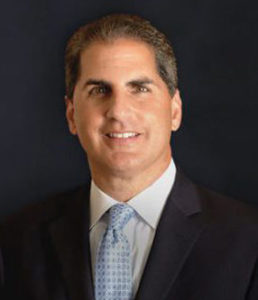TWO OFFICES IN NEW YORK CITY • Hablamos Español

What is Liability?
Click For Your Free ConsultationNYC Personal Injury Lawyer » New York Personal Injury Resources » What is Liability?
 Proving liability is essential if you want to recover compensation for a personal injury case. A person could be “at fault” for the cause of a crash without being held financially liable for your damages.
Proving liability is essential if you want to recover compensation for a personal injury case. A person could be “at fault” for the cause of a crash without being held financially liable for your damages.
You cannot recover money for your injury claim unless you can prove every element of negligence required to establish another person’s liability.
Liability is a legal claim against a party’s property or assets. In personal injury cases, negligence is the basis for establishing legal liability for damages.
There are several different types of liability standards that could apply in a personal injury case, including:
Negligence is the failure to act with a level of care used by a reasonably prudent person in a similar situation.
The legal elements of negligence are:
Each of the above elements must link together to form liability. For example, drivers have a duty of care to operate their vehicles safely and obey traffic laws.
If a driver breaches the duty of care by speeding, driving drunk, or failing to yield the right of way, that driver could be liable for damages sustained by accident victims.
However, your injury attorneys must prove that their breach of duty was a direct and proximate cause of the car crash. If you cannot prove causation, the at-fault driver is not liable for your damages.
An experienced attorney investigates the crash to gather evidence proving the other driver’s conduct caused the accident. Evidence of causation could include videos, photographs, expert witness testimony, physical evidence, and eyewitness testimony.
Strict liability holds a party liable for damages, including lost wages and medical bills, even though the accident victim does not prove negligence or intent. Instead, the victim only needs to prove that the other party’s conduct caused their injuries.
Dog bite cases and product liability claims are two examples of claims based on strict liability. In addition, some criminal acts may result in strict liability for damages, such as rape cases.
A party that holds a supervisory position over another person could be held liable for damages caused by that person under the vicarious liability standard. Vicarious liability is often used when employees cause injuries. Examples would include business owners, medical facilities, and trucking companies.
For instance, if an employee did not clean up a spill and the spill caused slip and fall accidents, the employer could be liable for damages.
However, the employer may not be liable if the employee’s actions were outside of the scope of the employment. Also, employers are not liable for the actions or conduct of independent contractors.
In most personal injury cases, the victim has the burden of proving their case. However, there are some instances where the burden of proof could be shifted to the party who caused the injury.
Under negligence per se, if the defendant broke a safety law and caused an accident, it is presumed that the defendant caused the victim’s injury. Therefore, the defendant is liable for the victim’s damages.
The negligence per se law must protect the general public interest, like drunk driving laws. The law must also have a criminal punishment for a conviction.
Also, negligence per se only creates a presumption of fault and liability. The defendant can fight the presumption by presenting evidence that proves their actions did not cause the accident or injury.
The type of injury and other factors determine the damages you could receive in a personal injury case.
Examples of the types of damages that are included in most personal injury cases include:
If a family member dies because of accident injuries, the family may receive compensation for damages by filing a wrongful death claim.
Regardless of the type of liability involved in a case, there are deadlines for filing claims. The statute of limitations sets those deadlines. If you do not file your lawsuit before time runs out, you lose your right to pursue a legal claim.
Therefore, it is generally wise to seek legal advice about a potential personal injury claim as soon as possible after an injury or accident.
Let our lawyers handle proving liability for your injury claim while you continue to focus on healing from your injuries.
Contact our law firm today to schedule a free consultation with one of our New York personal injury attorneys. At the Law Offices of Jay S. Knispel Personal Injury Lawyers, we want to help you and your family receive the money you deserve after being injured.
Search Our Site
Our Locations
New York City Office
450 7th Ave Suite 1605
New York, NY 10123
(212) 564 2800
Brooklyn Office
26 Court St., Suite 2511
Brooklyn, NY 11242
(718) 802-1600
We are available to take your call 24/7
